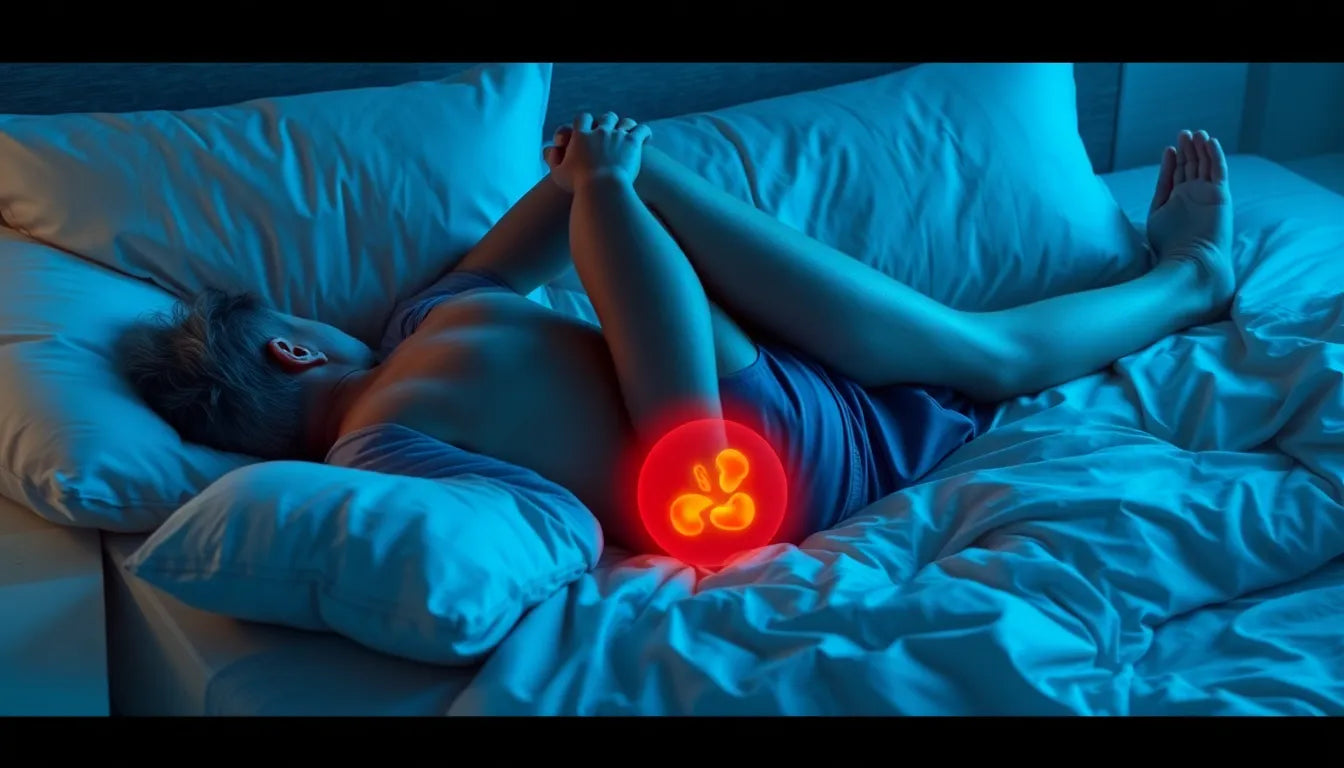Wrist pain is a common affliction that affects countless individuals, impacting their ability to perform everyday tasks with ease. Whether it's typing on a keyboard, lifting objects, or even simple activities like brushing teeth, wrist pain can significantly hinder one's daily routine. Addressing wrist pain early is crucial, as neglecting it can lead to chronic issues that are more challenging to manage over time. Understanding the causes and seeking timely intervention can make a substantial difference in one's quality of life.
Common causes of wrist pain
Wrist pain can arise from a variety of causes, each with its own set of challenges. Injuries, such as sprains or fractures, are immediate causes that require prompt attention. However, more insidious causes include overuse and repetitive strain, often stemming from poor ergonomics and repetitive movements. These issues are particularly prevalent in today's digital age, where prolonged use of computers and smartphones is common. Furthermore, medical conditions like arthritis or carpal tunnel syndrome can also contribute to persistent wrist pain, underscoring the need for comprehensive understanding and management.
Repetitive movements, especially those performed in awkward positions, can strain the wrist tendons and ligaments, leading to discomfort and pain. Poor ergonomic setups, whether at work or home, exacerbate this issue, making it essential to evaluate and adjust one's environment to prevent such strain. The prevalence of these factors highlights the importance of being proactive in addressing wrist pain.
The path to relief and strength
This blog post aims to provide a thorough guide on how to understand, relieve, and strengthen the wrist, empowering readers with the knowledge and practical solutions they need. By exploring the various causes of wrist pain and delving into effective strategies for relief and strengthening, we aim to equip you with the tools necessary to manage and overcome wrist discomfort. Our goal is to help you achieve a pain-free existence, enhancing your ability to perform daily activities with confidence and ease.
In the subsequent sections, we will delve deeper into the detailed causes and symptoms of wrist pain, explore effective diagnosis and initial treatment strategies, and discuss long-term management and strengthening techniques. By taking a holistic approach, we hope to guide you on a journey towards improved wrist health and overall well-being.
Detailed causes and symptoms of wrist pain
Wrist pain often stems from overuse and poor ergonomics, which are prevalent in many modern work environments. Repetitive tasks such as typing, writing, or assembly line work can lead to overuse injuries. These activities often involve awkward wrist positions that strain the tendons and ligaments over time, resulting in discomfort and pain. To mitigate these issues, adopting ergonomic solutions is essential. Adjusting your workspace to include an ergonomic chair, desk, and keyboard can significantly reduce strain on the wrist. Additionally, using ergonomic aids like wrist rests can alleviate pressure and promote a more natural wrist position.

Men's Posture Shirt™ - White
Patented, medical-grade posture shirt activates muscles and helps reduce neck, shoulder, and back pain.
Medical conditions such as carpal tunnel syndrome and tendonitis are also significant contributors to wrist pain. Carpal tunnel syndrome occurs when the median nerve is compressed as it travels through the wrist, leading to symptoms like numbness, tingling, and weakness. Tendonitis, on the other hand, involves inflammation of the tendons around the wrist, causing pain and stiffness. Both conditions can severely affect wrist function and require careful management.
| Condition | Symptoms |
|---|---|
| Carpal Tunnel Syndrome | Numbness, tingling, weakness, pain |
| Tendonitis | Pain, swelling, stiffness, reduced range of motion |
Diagnosis and initial treatment of wrist pain
Accurate diagnosis is crucial for effective treatment of wrist pain. The diagnostic process typically involves a thorough medical history and physical examination. Healthcare professionals may inquire about your work and leisure activities to identify potential causes of strain. In some cases, imaging tests such as X-rays or MRI scans may be necessary to rule out fractures or other structural issues.
Initial management of wrist pain focuses on reducing inflammation and preventing further injury. Resting the affected wrist is paramount, as continued use can exacerbate symptoms. Applying ice packs can help reduce swelling and numb pain. Support bandages or wrist splints may also be recommended to immobilize the wrist and promote healing. If symptoms persist or worsen, it is important to seek professional medical advice to explore further treatment options.
Long-term management and strengthening of the wrist
For long-term relief and prevention of wrist pain, incorporating therapeutic exercises into your routine is beneficial. These exercises aim to improve wrist strength and flexibility, reducing the likelihood of future injuries. Start with simple exercises such as wrist bends and rotations, gradually progressing to more challenging routines as your strength improves.
- Wrist flexor stretch: Extend your arm with your palm facing up, use your other hand to gently pull back on your fingers until you feel a stretch in your forearm. Hold for 15-30 seconds.
- Wrist extensor stretch: Extend your arm with your palm facing down, use your other hand to gently push down on your hand until you feel a stretch on the top of your forearm. Hold for 15-30 seconds.
- Grip strengthening: Squeeze a stress ball or hand gripper for a few seconds at a time, gradually increasing the duration as your grip strength improves.

Women's Posture Shirt™ - White
Medical-grade posture shirt with Neuroband™ tech to activate muscles and relieve pain or tension in neck, back, and shoulders.
Physiotherapy can also play a significant role in managing chronic wrist pain. A physiotherapist can tailor a rehabilitation program to your specific needs, ensuring a gradual progression in exercise intensity. This personalized approach helps enhance recovery and prevent future occurrences of wrist pain.
By taking these steps, you can effectively manage wrist pain and improve your overall wrist health, allowing you to perform daily activities with greater ease and comfort.
Preventive measures and ergonomic solutions for wrist pain
Preventing wrist pain involves a combination of workplace ergonomics and lifestyle adjustments. Ensuring your workspace is ergonomically sound can significantly reduce the risk of developing wrist pain. Start by setting up your desk to promote a neutral wrist position. This can be achieved by adjusting your chair and desk height so your wrists are level with your keyboard. Consider using ergonomic products such as wrist rests and adjustable chairs, which can help maintain proper posture and reduce strain on your wrists.
Incorporating lifestyle adjustments is equally important. Taking regular breaks from repetitive tasks can prevent overuse injuries. Aim to stretch and move your wrists every 30 to 60 minutes, especially if your work involves prolonged typing or manual tasks. Additionally, engaging in wrist-friendly activities like yoga or swimming can improve flexibility and strength, further reducing the risk of pain.
When to consider medical intervention for wrist pain
While many cases of wrist pain can be managed with ergonomic adjustments and exercises, there are instances where medical intervention may be necessary. If you experience severe pain, persistent swelling, or symptoms that do not improve with rest and home care, it is crucial to consult a healthcare professional. In some cases, conditions like carpal tunnel syndrome or tendonitis may require medical treatments such as corticosteroid injections or surgery to alleviate symptoms and restore wrist function.
Early intervention is key to preventing long-term complications, so do not hesitate to seek professional advice if your symptoms are severe or unresponsive to initial treatments.
Frequently Asked Questions
What are the early signs of wrist pain?
Early signs of wrist pain can include mild discomfort, stiffness, or a tingling sensation in the wrist. These symptoms may intensify with repetitive movements or strain, indicating the need for ergonomic adjustments or rest to prevent further damage.
How can I tell if my wrist pain is serious?
Wrist pain is considered serious if it is accompanied by severe swelling, persistent numbness, or weakness in the hand. If the pain does not improve with home care or rest, or if it interferes with your daily activities, seeking medical evaluation is recommended.
What are the best exercises for wrist pain relief?
Effective exercises for wrist pain relief include wrist flexor and extensor stretches, wrist rotations, and grip strengthening exercises. These routines help improve flexibility, reduce stiffness, and strengthen the muscles around the wrist.
Can ergonomic products really help with wrist pain?
Yes, ergonomic products can significantly help in preventing and alleviating wrist pain. Items like ergonomic chairs, desks, and wrist rests promote proper posture and reduce strain, making them valuable tools in managing wrist discomfort.
When should I see a doctor about my wrist pain?
You should see a doctor if your wrist pain is severe, persistent, or accompanied by symptoms like numbness, weakness, or swelling that do not improve with rest and home care. Early medical intervention can prevent further complications and aid in effective treatment.


















